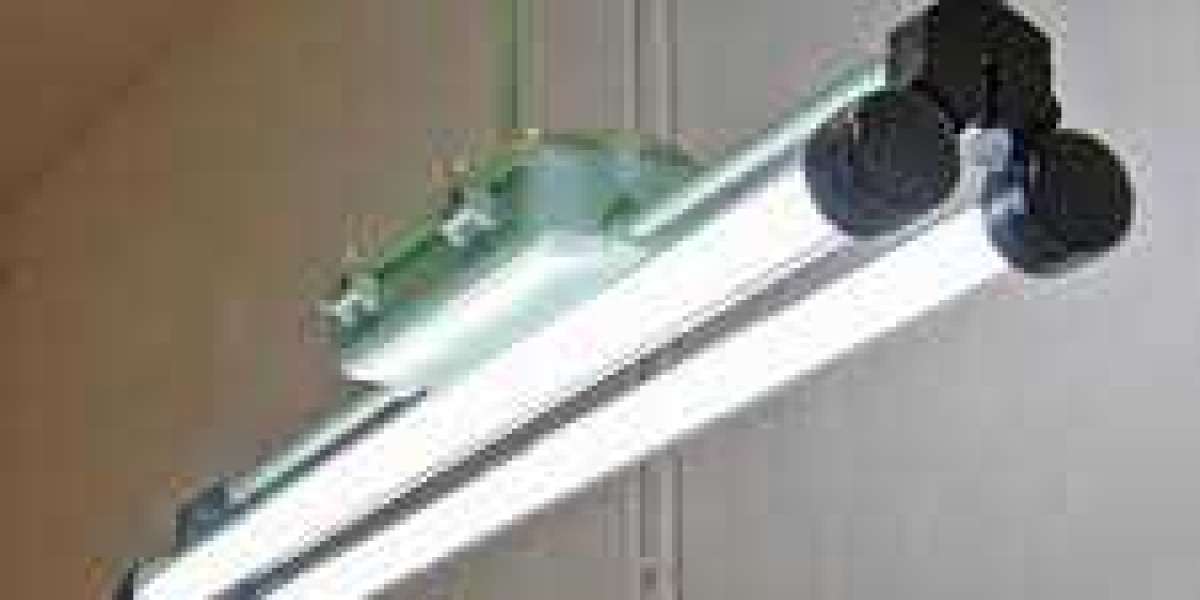Fluorescent light fixtures are a popular choice for both residential and commercial spaces due to their energy efficiency, long lifespan, and cost-effectiveness. However, with a wide range of styles, sizes, and specifications available, choosing the right fluorescent light fixture for your space can be confusing. Whether you're lighting a kitchen, office, garage, or warehouse, here’s a guide to help you make the best decision.
1. Understand the Purpose of the Space
The first step is to evaluate how the space will be used:
Office or Study Areas: Opt for fixtures that provide consistent, glare-free lighting to reduce eye strain.
Garages and Workshops: Bright, high-output fixtures are ideal for visibility while working.
Kitchens and Utility Rooms: Choose fixtures with clear, even light distribution for safety and functionality.
Commercial Spaces: Larger fixtures with higher lumens are needed to ensure adequate lighting across wide areas.
2. Choose the Right Size and Shape
Fluorescent fixtures come in various sizes—typically measured by the length of the tube (e.g., T5, T8, T12):
T8 Fixtures (1-inch diameter) are common and compatible with most modern ballasts.
T5 Fixtures are slimmer and offer higher efficiency but may require special fittings.
T12 Fixtures are older and less efficient, often used in older buildings but being phased out.
The size and shape of your fixture should match both the lighting needs and the layout of your space.
3. Consider Color Temperature
Color temperature affects the mood and functionality of a space:
Cool White (4000K–5000K): Great for workspaces, offices, and garages due to their bright, crisp light.
Warm White (2700K–3000K): Ideal for living rooms, bedrooms, and places where a cozy ambiance is desired.
Daylight (5000K–6500K): Best for areas where natural-like lighting is needed, such as kitchens or design studios.
4. Check Lumens, Not Just Watts
Many people mistakenly choose lighting based on wattage. Instead, focus on lumens, which measure the actual brightness:
A 32-watt T8 bulb typically delivers around 2,800–3,000 lumens.
Higher lumens = brighter light. Choose based on how much brightness your space needs.
5. Look for Energy Efficiency
Modern fluorescent fixtures are more energy-efficient than older models. Look for:
Electronic ballasts instead of magnetic ones – they’re quieter, flicker-free, and more efficient.
Energy Star-rated fixtures to ensure you're saving on your electricity bill.
6. Fixture Style and Mounting Options
There are several styles and mounting types to consider:
Surface-mounted fixtures for direct installation on ceilings or walls.
Recessed fixtures for a clean, modern look in drop ceilings.
Wraparound and strip lights for garages, hallways, or industrial spaces.
Make sure your chosen style complements your space both visually and functionally.
7. Budget and Maintenance
While fluorescent fixtures are cost-effective long-term, consider:
Initial costs for purchasing and installation.
Replacement costs for bulbs and ballasts over time.
Ease of maintenance, especially in high-ceiling or hard-to-reach areas.
Final Thoughts
Choosing the right fluorescent light fixture isn’t just about picking the brightest bulb. It involves assessing your space, usage, energy needs, and aesthetic preferences. By considering factors like size, lumens, color temperature, and efficiency, you can select a fixture that provides optimal lighting while saving money and energy in the long run.







